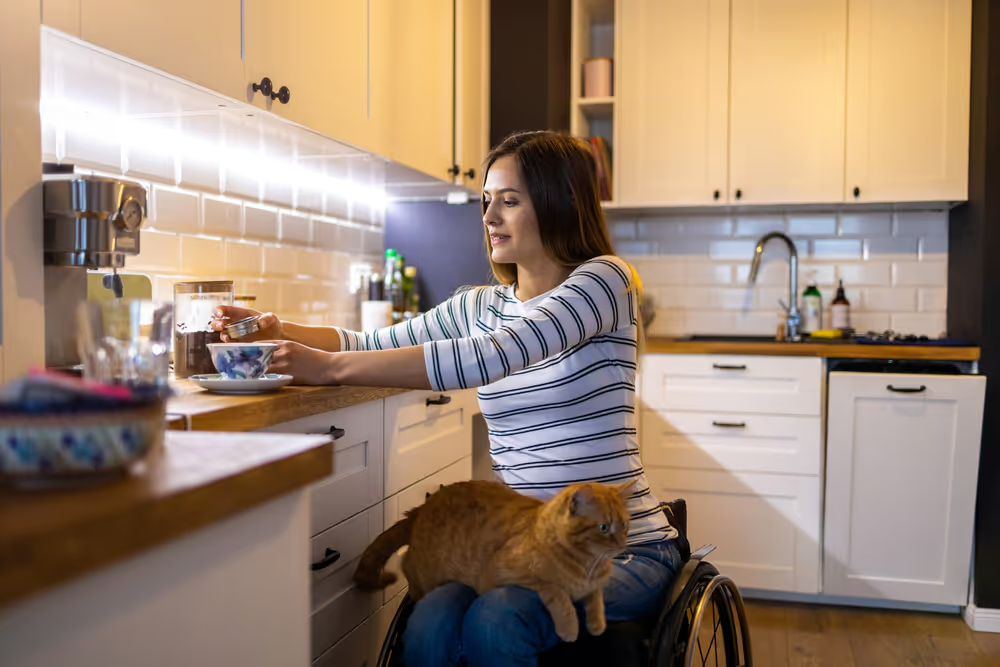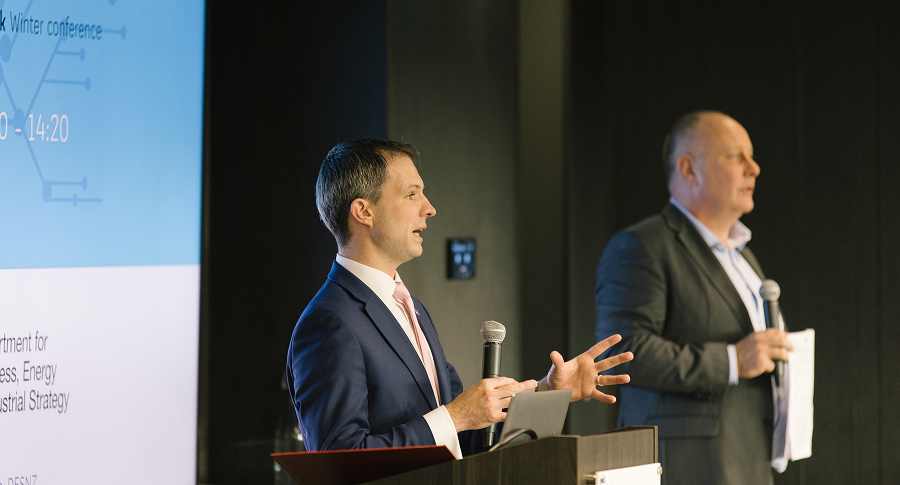Why are there a disproportionate number of disabled people in fuel poverty?
People with disabilities* are twice as likely to be living in poverty as a non-disabled person.1 On top of this, approximately a quarter of disabled people live in fuel poverty, with a significant cause of this is being the additional financial burdens placed upon disabled people, including, but not limited to: 2,3
- Increased mobility costs, from the need for taxis or greater usage of public transport to equipment such as wheelchairs or hoists in the home
- Increased cost of specialist equipment and/or services, such as home adaptations to install things like wet rooms and continued therapies
- Increased usage of energy, where people may need to use assistive powered technology, or heat their homes for longer periods of time. For example, disabled people with certain health conditions need to keep warm to manage their pain levels.
This usage of energy will see disabled people amongst the hardest hit by the escalating energy prices. Even before the cost of living crisis, disability charity Scope estimated that disabled people typically experienced £583 a month in extra costs, equivalent to almost half of the average disabled person's income.3 These extra costs have left 900,000 households with disabled residents in fuel poverty, but if their energy bills get close to £3,000 (as they may do when accounting for the aforementioned additional costs) this number is expected to soar to 2.1 million.2
These extra costs have left 900,000 households with disabled residents in fuel poverty, but if their energy bills get close to £3,000 (as they may do when accounting for the aforementioned additional costs) this number is expected to soar to 2.1 million.
Over the next few months, the disabled population of the UK faces potentially devastating financial, physical and mental health impacts. According to a study by disability charity Leonard Cheshire, it is estimated that, right now, over 600,000 disabled people across the UK have £10 or less left a week for food and other essentials after bills, housing and taxes.4
What are the immediate measures to alleviate the burden of energy costs on disabled people?
If the government is to avoid the catastrophic impact the energy crisis will have on the disabled population in the UK, there is a lot of work to be done. The need for immediate support before the upcoming winter is urgent.
Measures suggested and supported by organisations such as Scope, Leonard Cheshire and the Disability Poverty Campaign Group (DPCG) include:
- Reinstating the Warm Home Discount for those who lost it this year. The current changes would see 300,000 people miss out.5
- Keeping benefits in pace with the rapidly rising cost of living. The Personal Independence Payment is the main benefit that accounts for the extra costs of disability; where PIP has increased by 3.1% from last September, it is predicted that inflation could rise as high as 18% next year.6,7
- A separate support package tailored for disabled people, acknowledging that a significant proportion rely on energy to help manage their conditions and cannot 'cut back'. A survey by Scope showed strong support to double the one-off payment of £150 due to be paid by the start of October, and for the government to explore the possibility of a discounted “social tariff.8 National Energy Action also recommend that the government waive the planned 'heat now, pay later' rebate for disabled people.2
What long terms measures can be taken to address the issue?
The outsized proportion of people with disabilities living in fuel poverty points to a necessary systemic change within energy beyond just his winter. Some of the steps industry and government could make towards systemic improvement could be:
- Focus on better methods of identifying marginalised and vulnerable households that need help, through improvements in smart meter distribution and updating and improving the Priority Services Register, which is currently analogue.
- Incentivising and ranking suppliers according to their approach to disabled consumers, for example through the accessibility of communication methods, and the level of support they offer to disabled people with high energy costs.
- Rethinking how the problem is being addressed. The current fuel poverty definition of Low Income Low Energy Efficiency (LILEE) risks covering different wounds with the same size bandage. There is not enough focus on how structural inequalities, such as disability but also extending to race, gender and class, can create distinct experiences of fuel poverty. These distinct experiences require solutions based upon people's realities.9
- Enacting a national programme of mass improvement of energy efficiency measures, making fuel poor households with disabled residents amongst the first priorities.
The stratospheric nature of the upcoming energy price rises is worrying for everyone. But with disabled people already at a considerable disadvantage within the energy system, the coming winter looks particularly crushing. The support being offered will barely make a dent towards ensuring life-saving services and equipment will be maintained, and unless immediate, improved financial support is provided, many lives will be at risk.
This blog came out of Regen's work in assessing the UK's performance towards Sustainable Development Goal 7: Clean and Affordable energy. Co-author Prina Sumaria met Gemma Cook from Leonard Cheshire to discuss the intersection between energy and disability. Gemma works on disability rights and putting persons with disability at the forefront of the SDGs in order to reach those most marginalised. We are very thankful to Gemma Cook and Gemma Hope for sharing their invaluable insight and knowledge on this topic.
*Note that the phrases "those with a disability" and "disabled" people are used throughout the blog. Like any group of people, disabled people are a group with a wide range of needs, challenges and opinions. Whilst we try to be specific where appropriate, we acknowledge that we are generalising.
What is fuel poverty?
What may seem like a straightforward question has become more complicated in recent years. It is important to understand the definition of fuel poverty, as it draws the line between which groups do and don't receive support. The definition of fuel poverty used to be uniform across the UK, defined as when a household needs to spend more than 10% of its income on fuel.10 This definition survives in the devolved governments, but, in 2021, England moved to an indicator of Low Income Low Energy Efficiency (LILEE), whereby a person is considered fuel poor when their disposable income is below the poverty line (after housing and fuel costs) and their household is below EPC Band C.11
References
- What can be done to tackle fuel poverty?, Climate Just, accessed August 2022
- Charities warn number of disabled households in fuel poverty set to double by end of year, Scope, March 2022
- Disability Price Tag, Evan John, Greg Thomas, Anel Touchet, February 2019
- Rising costs are a catastrophe for disabled people, Leonard Cheshire, April 2022
- Almost 300,000 disabled people stripped of government help with fuel costs as bills rocket, Rob Merrick, April 2022
- Why disabled people are at the centre of the cost-of-living crisis, James Taylor, May 2022
- UK inflation projected to hit 18.6% as gas prices surge, Financial Times, accessed August 2022
- Scope warns new Prime Minister must act now to avert Dickensian dystopia for disabled people this winter, Scope, September 2022
- Intersectionality: Revealing the realities of poverty and inequality in Scotland, Poverty and Inequality Commission, May 2021
- A critical analysis of the new politics of fuel poverty in England, Lucie Middlemiss, 2017
- Fuel poverty factsheet 2022, Department for Business, Energy and Industrial Strategy, February 2022














